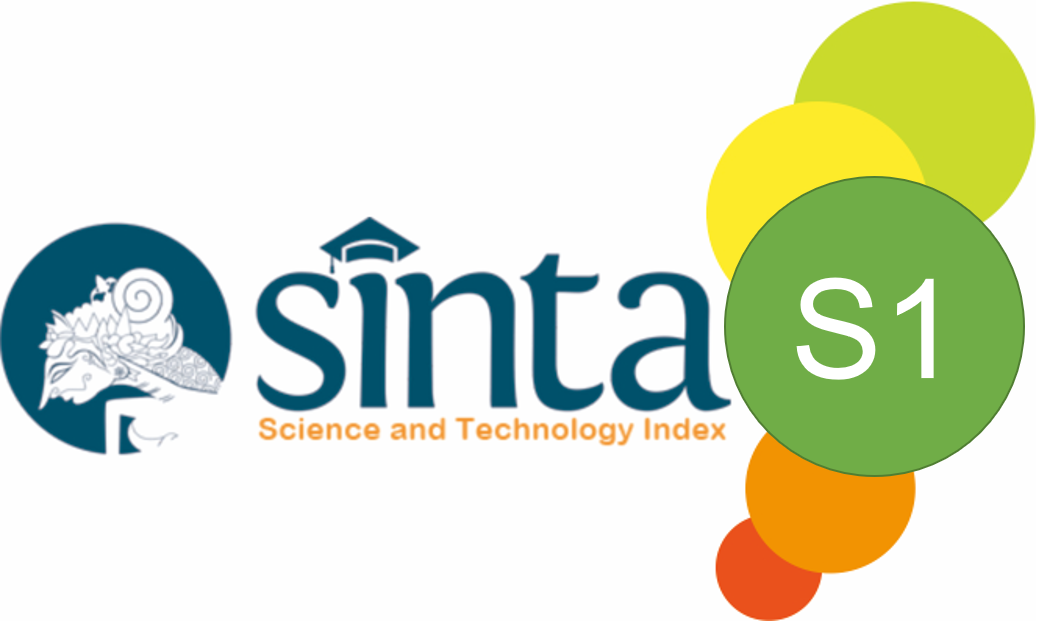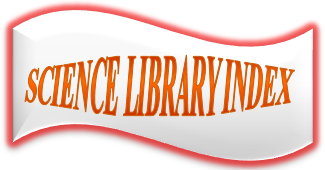Parametric Rotor Innovation for Gravitational Vortex Turbines: Advancing Clean Energy through Integrated Computational Fluid Dynamics (CFD)Simulation and Experimentation to Support the Sustainable Development Goals (SDGs)
Abstract
This study aims to optimize the rotor design of gravitational vortex turbines through an integrated approach combining parametric modeling, computational fluid dynamics (CFD), and experimental validation. The rotor geometry was formulated using velocity triangle theory and refined using a CFD-based evaluation of flow behavior across multiple turbulence models. To ensure accurate comparisons, experimental tests were conducted under controlled flow conditions, and mechanical losses due to bearing friction were measured and accounted for. The simulation results demonstrated strong agreement with empirical data, validating the effectiveness of the proposed design. By enhancing energy conversion efficiency while minimizing environmental impact, this research supports the development of decentralized, renewable micro-hydropower systems. The findings contribute to the advancement of Sustainable Development Goals (SDGs).
Keywords
Full Text:
PDFReferences
Sun, S. (2023). Development of hydropower and the environmental impacts of hydroelectric dam construction in China. E3S Web of Conferences, 393, 01032.
Del Bene, D., Scheidel, A., and Temper, L. (2018). More dams, more violence? A global analysis of resistances and repression around conflictive dams through co-produced knowledge. Sustainable Science, 13(3), 617–633.
Williamson, S. J., Lubitz, W. D., Williams, A. A., Booker, J. D., and Butchers, J. P. (2020). Challenges facing the implementation of pico-hydropower technologies. Journal of Sustainable Research, 2020, 0003.
Alzamora Guzmán, V. J., Glasscock, J. A., and Whitehouse, F. (2019). Design and construction of an off-grid gravitational vortex hydropower plant: A case study in rural Peru. Sustainable Energy Technologies and Assessments, 35, 131–138.
Velásquez, L., Posada, A., and Chica, E. (2022). Optimization of the basin and inlet channel of a gravitational water vortex hydraulic turbine using the response surface methodology. Renewable Energy, 187, 508–521.
Velásquez, L., Posada, A., and Chica, E. (2023). Surrogate modeling method for multi-objective optimization of the inlet channel and the basin of a gravitational water vortex hydraulic turbine. Applied Energy, 330, 120357.
Venukumar, A., Nandakumar, M., Venkateswara Rao, M., and Kumar, S. M. (2015). Run-of-the-river micro hydroelectric power generation from artificially induced vortices. Power Research, 11(4), 741-750.
Dhakal, S., Nakarmi, S., Pun, P., Thapa, A. B., and Bajracharya, T. R. (2013). Development and testing of runner and conical basin for gravitational water vortex power plant. Journal of the Institute of Engineering, 10(1), 140–148.
Wichian, P., and Suntivarakorn, R. (2016). The effects of turbine baffle plates on the efficiency of water free vortex turbines. Energy Procedia, 100, 198–202.
Ullah, R., Cheema, T. A., Saleem, A. S., Ahmad, S. M., Chattha, J. A., and Park, C. W. (2019). Performance analysis of multi-stage gravitational water vortex turbine. Energy Conversion and Management, 198, 111788.
Ullah, R., Cheema, T. A., Saleem, A. S., Ahmad, S. M., Chattha, J. A., and Park, C. W. (2020). Preliminary experimental study on multi-stage gravitational water vortex turbine in a conical basin. Renewable Energy, 145, 2516-2529.
Mulligan, S., Creedon, L., Casserly, J., and Sherlock, R. (2018). An improved model for the tangential velocity distribution in strong free-surface vortices: An experimental and theoretical study. Journal of Hydraulic Research, 56(6), 757–771.
Shabara, H. M., Yaakob, O. B., Ahmed, Y. M., and Elbatran, A. H. (2015). CFD simulation of water gravitation vortex pool flow for mini hydropower plants. Jurnal Teknologi, 74(5), 77–81.
Shabara, H. M., Yaakob, O. B., Ahmed, Y. M., Elbatran, A. H., and Faddir, M. S. M. (2015). CFD validation for efficient gravitational vortex pool system. Jurnal Teknologi, 74(5), 97–100.
Perez-Rodriguez, A. J., Del Rio, J. S., Grisales-Noreña, L. F., and Galvis, S. (2022). Optimization of the efficiency of a Michell-Banki turbine through the variation of its geometrical parameters using a PSO algorithm. WSEAS Transactions on Heat and Mass Transfer, 17, 45–53.
Vaz, D. A. T. D. do Rio, Vaz, J. R. P., and Silva, P. A. S. F. (2018). An approach for the optimization of diffuser-augmented hydrokinetic blades free of cavitation. Energy for Sustainable Development, 45, 142–149.
Velásquez García, L., Rubio-Clemente, A., and Chica, E. (2022). Runner optimal position in a gravitational water vortex hydraulic turbine with a spiral inlet channel and a conical basin. Renewable Energies and Power Quality Journal, 20, 248.
Velásquez, L., Rubio-Clemente, A., and Chica, E. (2024). Numerical and experimental evaluation of the performance of agravitational vortex turbine rotor. Renewable Energy and Power Quality Journal, 22(4), 133-137.
Jiang, Y., Raji, A. P., Raja, V., Wang, F., AL-bonsrulah, H. A. Z., Murugesan, R., and Ranganathan, S. (2022). Multi–disciplinary optimizations of small-scale gravitational vortex hydropower (SGVHP) system through computational hydrodynamic and hydro–structural analyses. Sustainability, 14(2), 727.
Hite, J. E., and Mih, W. C. (1994). Velocity of air-core vortices at hydraulic intakes. Journal of Hydraulic Engineering, 120(3), 284–297.
Alfonsi, G. (2009). Reynolds-averaged Navier-Stokes equations for turbulence modeling. Applied Mechanics Reviews, 62(4), 040802.
Liu, M., Jiang, C., Gao, G., Zhu, H., and Xu, L. (2024). Assessment of RANS turbulence models based on the cell-based smoothed finite element model for prediction of turbulent flow. Engineering Analysis with Boundary Elements, 168, 105937.
Monsalve-Cifuentes, O. D., Vélez-García, S., Sanín-Villa, D., and Revuelta-Acosta, J. D. (2024). Fluid-structure numerical study of an in-pipe axial turbine with circular blades. Energies, 17(14), 3539.
Burbano, A., Sierra, J., Correa, E., Ruiz, A., and Sanin, D. (2022). Numerical simulation of the inlet channel geometry influence in the torque generated at the gravitation water vortex turbine. EUREKA: Physics and Engineering, 6, 106–119.
Celik, I. B., Ghia, U., Roache, P. J., Freitas, C. J., Coleman, H., and Raad, P. E. (2008). Procedure for estimation and reporting of uncertainty due to discretization in CFD applications. Journal of Fluids Engineering, 130(7), 078001.
Rouway, M., Nachtane, M., Tarfaoui, M., Chakhchaoui, N., Omari, L. E. H., Fraija, F., and Cherkaoui, O. (2021). 3D printing: Rapid manufacturing of a new small-scale tidal turbine blade. The International Journal of Advanced Manufacturing Technology, 115, 61–76.
Betancour, J., Romero-Menco, F., Velásquez, L., Rubio-Clemente, A., and Chica, E. (2023). Design and optimization of a runner for a gravitational vortex turbine using the response surface methodology and experimental tests. Renewable Energy, 210, 306–320.
Wu, P. L., He, C. L., Chang, Z., Li, X. L., Ren, Z. Y., Li, D. Y., and Ren, C. Z. (2022). Theoretical calculation models and measurement of friction torque for rolling bearings: State of the art. Journal of the Brazilian Society of Mechanical Sciences and Engineering, 44, 435.
Campbell, J. B., and Schwarz, J. M. (2011). Precise measurement of velocity dependent friction in rotational motion using a falling mass. European Journal of Physics, 32(5), 1323–1333.
Zhou, J., Guo, Y., and Wang, D. (2015). Analysis on the load characteristics and coefficient of friction of angular contact ball bearing at high speed. Tribology International, 92, 362–370.
Kumar, S. M., Kumar, A., and Saini, R. P. (2013). Computational fluid dynamics (CFD) mesh independency technique applied to a Kaplan turbine draft tube. Energy, 58, 272–280.
Escalera, E., Morales, R., and Morales, R. (2011). Experimental and numerical simulations predictions comparison of power and efficiency in hydraulic turbine. International Journal of Rotating Machinery, 2011, 146054.
Akbaş, B., Kocaman, A. S., Nock, D., and Trotter, P. A. (2022). Rural electrification: An overview of optimization methods. Renewable and Sustainable Energy Reviews, 156, 111935.
Kyawo, A., Khan, M. I., Chowdhury, S. I., and Rahaman, S. (2023). Assessing the feasibility of gravitational vortex turbines for sustainable energy production in remote hilly areas of Bangladesh. Journal of Energy Research and Reviews, 14(4), 45–55.
Haryadi, H., Subarjah, A. M., and Sugianto. (2020). Experimental study on 3D vortex gravitational turbine runner. AIP Conference Proceedings, 2296(1), 020025.
Dakheel, M. H., Khalil, W. H., and Rashid, R. S. (2025). Numerical and experimental investigation of main parameters affecting the performance of micro gravitational water vortex turbine. AIP Conference Proceedings, 3303(1), 120001.
Vinayakumar, B., Antony, R., Binson, V. A., and Youhan, S. (2024). Experimental and numerical study on gravitational water vortex power plant for small water bodies. e-Prime: Advances in Electrical Engineering, Electronics and Energy, 7, 100460.
Anshar, A.N., Maulana, A., Nurazizah, S., Nurjihan, Z., Anggraeni, S., and Nandiyanto, A.B.D. (2021). Electrical analysis of combination of orange peel and tamarind for bio-battery application as an alternative energy. Indonesian Journal of Multidiciplinary Research, 1(1), 125-128.
Fauziah, N.R., Maoludin, S.A., Ramadhan, W.S., Wafi, W., Khoerunnisa, F., and Winarno, N. (2021). Geothermal: from education to a new solution for renewable energy. Indonesian Journal of Multidiciplinary Research, 1(1), 85-88.
Hidayah, F., Muslihah, F., Nuraida, I., Winda, R., Vania, V., Rusdiana, D., and Suwandi, T. (2021). Steam power plant powered by wood sawdust waste: A prototype of energy crisis solution. Indonesian Journal of Teaching in Science, 1(1), 39-46.
Irawan, A.K., Rusdiana, D., Setiawan, W., Purnama, W., Fauzi, R.M., Fauzi, S.A., Alfani, A.H.F., and Arfiyogo, M.R. (2021). Design-construction of a solar cell energy water pump as a clean water source for people in Sirnajaya village, Gununghalu district. ASEAN Journal of Science and Engineering Education, 1(1), 15-20.
Jakhongir, S., Kurbonov, K., Muhabbat, H., Salim, K., Shavkat, M., Khulkar, K., and Doniyor, K. (2023). Analyzing climate policy utilizing financial and energy industry models. ASEAN Journal of Economic and Economic Education, 2(2), 125-138.
Juhanaini, J., Sholihat, L.F., Maryanti, R., Budiman, R.A., and Armindony, F.F. (2022). Media learning patch board in science learning energy change materials for children with intellectual disabilities. Indonesian Journal of Teaching in Science, 2(2), 139-146.
Jweri, A.R.K., Ogaili, A.A.F., Amin, S.A., Khalaf, M.I., Al-Haddad, L.A., Jaber, A.A., and Karkhi, M.I. (2025). Enhancing predictive maintenance in energy systems using a hybrid Kolmogorov-Arnold network (KAN) with short-time Fourier transform (STFT) framework for rotating machinery. ASEAN Journal of Science and Engineering, 5(2), 465-494.
Kareem, K., Rasheed, M., Liaquat, A., Hassan, A.M.M., Javed, M.I., and Asif, M. (2022). Clean energy production from jatropha plant as renewable energy source of biodiesel. ASEAN Journal of Science and Engineering, 2(2), 193-198.
Khan, M.A., Hakeem, L., Ali, M.J., and Hussain, M.S. (2025). Uncovering the full potential utilization of petroleum reserves residue for sustainable energy supply. ASEAN Journal for Science and Engineering in Materials, 4(1), 13-22.
Octaviani, H., Sakti, A.W., and Bilad, M.R. (2022). Improving activities and learning outcomes of elementary school students through experimental methods using lime as an alternative electrical energy source during the covid-19 pandemic. ASEAN Journal for Science Education, 1(2), 63-74,
Pechsiri, T., and Puengsungwan, S. (2023). Energy harvesting based on living plants for smart farming. ASEAN Journal of Science and Engineering, 3(1), 47-56.
Putri, B.M., Ningrum, L., and Maulida, N.M. (2021). Simple micro-hydro uses water as a renewable energy source. Indonesian Journal of Multidiciplinary Research, 1(1), 23-28.
Sani, S., Siraj, I.T., Kurawa, M.A., and Koki, I.B. (2023). Energy-efficient synthetic method, X-ray diffraction analysis and thermal decomposition of cobalt (II) and nickel (II) schiff base complexes derived from 2-aminobenzothiazole. ASEAN Journal of Science and Engineering, 3(2), 185-198.
Sihombing, D.A., Yulianti, L., and Prima E.C. (2021). Aloe vera as an alternative energy source. Indonesian Journal of Multidiciplinary Research, 1(1), 29-34.
Strömberg, L.J. (2023). Electro-magnetism in battery pot plants with heating chambers for heat energy transduction. ASEAN Journal of Science and Engineering, 3(1), 63-68.
Susilowati, N.I., Liliawati, W., and Rusdiana, D. (2023). Science process skills test instruments in the new indonesian curriculum (merdeka): Physics subject in renewable energy topic. Indonesian Journal of Teaching in Science, 3(2), 121-132.
Umar, A., Gbenga, A.A., Yusuf, M.-N. O., Faridah, A., Emmanuel, A.T., and Adekitan, A.F. (2025). Production and characterization of briquettes from agricultural wastes for sustainable energy solutions. ASEAN Journal for Science and Engineering in Materials, 4(2), 121-136.
Waheed, A., Habibullah, H., Irfan, M., Hassan, A., Habib, B., Abbas, S., and Shafique, M.Z. (2024). Exploring diverse substrates for enhanced water splitting: tailoring energy conversion and storage through specific qualities with its limitations. ASEAN Journal for Science and Engineering in Materials, 3(2), 141-176.
DOI: https://doi.org/10.17509/ijost.v11i3.90012
Refbacks
- There are currently no refbacks.
Copyright (c) 2025 Universitas Pendidikan Indonesia

This work is licensed under a Creative Commons Attribution-ShareAlike 4.0 International License.
Indonesian Journal of Science and Technology is published by UPI.
View My Stats




















